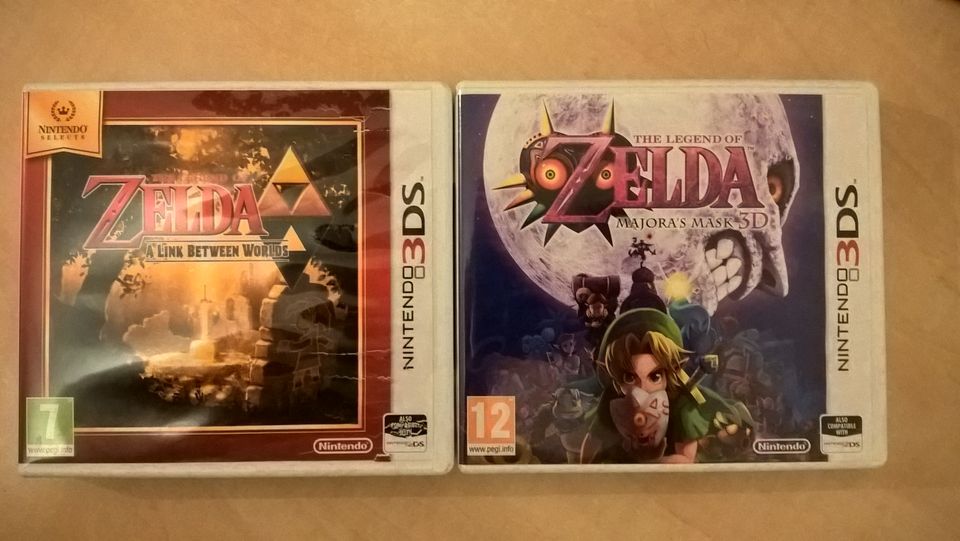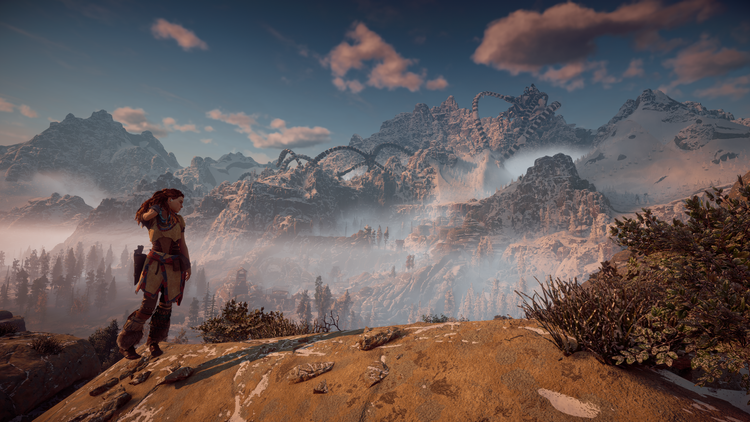Diving into The Legend of Zelda

I had never played any of the Legend of Zelda games. Of course, I knew a lot about them from hearsay, as probably any gamer on the web does, but that's not the same. Since they also are a pretty important part of gaming history, I'd planned on trying them out for a long time. Now that I have a Nintendo 3DS, I decided to give them a go.
After some googling around, I'd found two good candidates: A Link Between Worlds and The Majora's Mask (a remake of the one originally published on Nintendo 64) and bought them second-hand.
They seemed representative: A Link Between Worlds looked a lot like the original Zelda games - action adventure with a top-down view, with the standard plot - "Link saves Zelda and the world."

On the other hand, Majora's Mask is seen from third person, has a completely different story and an unusual time looping mechanic - all of these made it a widely beloved, well-known legend.

The tl;dr version: they're both good games, and I hope to play another Zelda game sometime.
Majora's Mask
There were many things to love here, and I see why it's so popular (not to mention commonly regarded as one of the best games ever made.) The plot revolves about an impending, magically induced catastrophe - a really angry-looking moon will crash into Clock Town in three days and kill everyone on the planet. Link has his Ocarina of Time, though - and when the end draws near, he can return three days back and gain more time.
Every time he does this, he loses most of his items, like money or ammunition. He keeps the important story items - masks, songs and item upgrades.
During his travels, Link gains more songs he can play - they allow him to teleport to certain waypoints, slow down or speed up time, and so on. But the central part of the game are the masks. There are some minor masks that give Link a new ability: the Rabbit mask lets him run faster, the Blast mask makes him explode, the Fairy mask (pictured above) attracts fairies. Many of these are not required to finish the game.
Then there are the four "main" masks - those that transform Link into a completely different form, like the Deku:

These give him different physical properties and abilities - the Deku is so light it can skip on water or float in the air, while the Zora is tall and can breathe under water, for example.
Even the fact that Link is always portrayed as a bland, blank slate is not so weird in Majora's Mask: in this game, he's so often pretending to be someone else, it might be justified. And it has a creepy aspect: the mask doesn't just transform him into a Goron, or a Zora - it always is a specific person that died restless. Now you wear their body, interact with people who recognize you, and never mention their friend is actually dead, and you're just using his body.
Another thing that indirectly portrays Link's actions as inconsequential and him as completely forgettable is the fact that every time you solve an area's problems and save the people within it, it reverts into its original state when you return back in time. So regardless of how many times Link helps the people living around the Termina fields, they will never remember him; in the end, he will be just a strange little fellow who appears, saves the town in three days, and leaves again. The friendships and connections he spent subjective weeks building will never have existed.
Yes, this is a thing you never have to think about, if you don't want to. But it's what makes this game different and the more oppressive the more you think about it.
Another of the things that people love about Majora's Mask is that it's huge - you can explore for a long, long time if you want to find everything. Even more so, because of the fact that many events only occur at a specific time within the three days. For example, there's an old lady that gets mugged at midnight of the first day, in the northern part of the town. You can help her and unlock interesting quests and rewards - but you can finish the game never knowing you've missed it.
I get the appeal, but it's not ideal for me: I don't have that much time, and I still have many games I hadn't had time to play yet. On the other hand, I don't want to miss half of the game. Fortunately, that's easily fixed: I play as I like, and when I finish a dungeon, I consult a walkthrough to see what I'd missed or what to do next.
My biggest gripe about the game is about the camera. Frankly: it's horrible. It often seems to show you everything except where you're going and who's attacking you, which can get really frustrating, when you're fighting enemies or solving puzzles that require precision and exact timing. I've often been disgusted by the fact that I'm losing just because the camera hates me.
If these issues didn't exist, I'd probably still like it less than Link between Worlds. However, as it is, it's absolutely certain: this made me want to throw the DS in frustration way too many times.
A Link Between Worlds
A Link Between Worlds is a completely different game: seen top-down, it's more similar to the original Zelda games. It's bright, cheerful and optimistic. The NPCs are few and mostly friendly. There are no cities to speak of - only a few clusters of houses.
The plot is the same as always - Zelda and her kingdom is in imperilled, this time by the evil magician Yuga, who does one thing or another to the Seven Sages you now have to save. But the gameplay is just as great as the story is bland.
Link starts with his sword and shield and sets out into the world. He will need more equipment soon enough - which he can either rent (for a few Rupees, lasting until he dies) or buy (permanently, but for more money). He can then use these items to overcome new kinds of obstacles, and to get into previously inaccessible places. This will also allow him, among other things, to rescue more Maimais - cute, octopus-like creatures hidden under rocks, in trees and on walls, that will help Link by upgrading his equipment. Interestingly, they're completely invisible, and you have to locate them by listening for their cute cries.
The most prominent game mechanic, however, is turning Link into a painting and traversing along walls. This way he can slip through cracks, into or out of prisons, and even into the alternate/opposite world, Lorule.

Original game mechanics
I liked how both of these Zelda games used original, interesting mechanics and gameplay elements. Their use of strong themes - spirits and masks, music (the Ocarina songs) or paintings and the theme of beauty - is a fresh breeze among the tons of copy-pasted tropes. Yes, at their core, they sometimes still work just as any other games' teleport, obstacle remover or a collecting side-game (even the newest Pokemon Sun has that one - but instead of a hundred cute Maimai, you collect a hundred boring Zygarde cells, that are nothing but a sparkle on the ground.) But the stylization makes them fit the world well, easy to remember and fun to use.
All in all, both of these games were well worth playing. Majora might give the player more things to think about, but sometimes it frustrates, mostly because of the problematic camera/targeting. On the other hand, LbW is simpler, but just plain fun. I'm looking forward to playing more games from this series.
as stated in the image descriptions, the pictures are linked from zeldadungeon.net

Comments ()